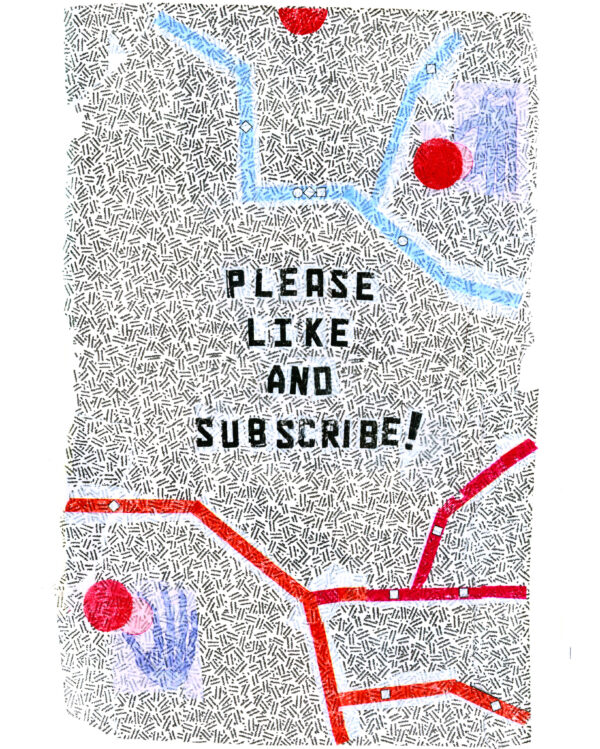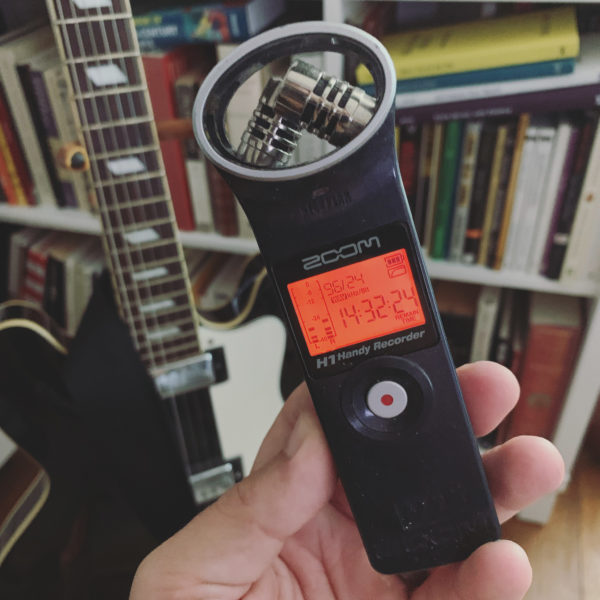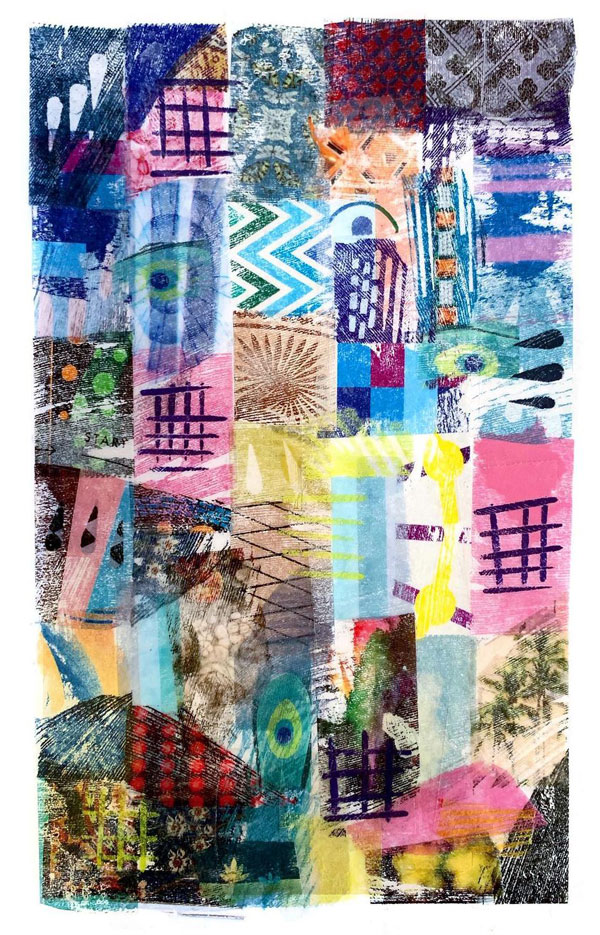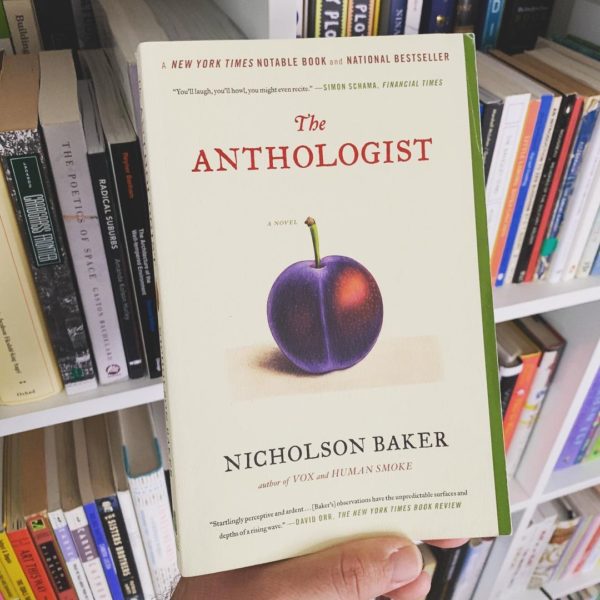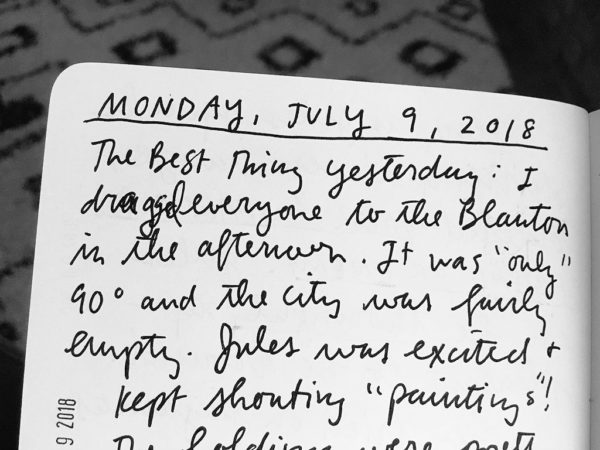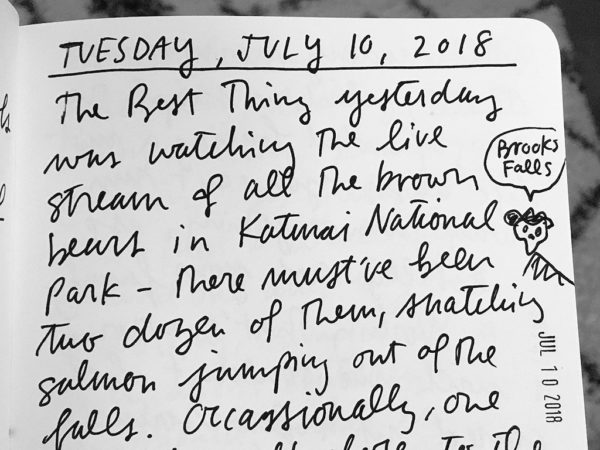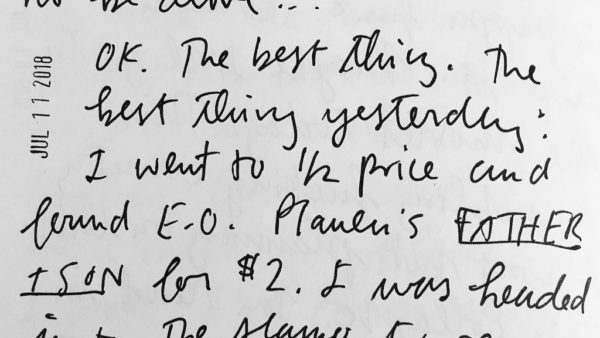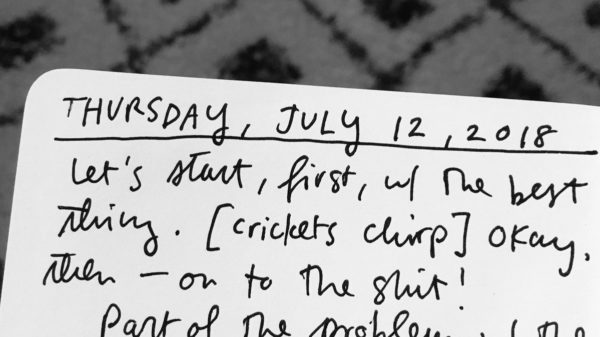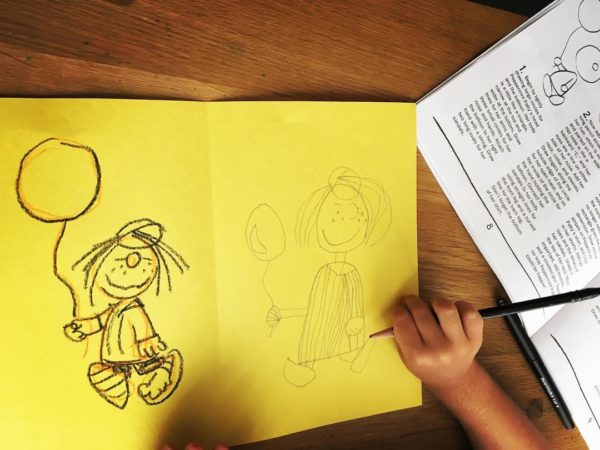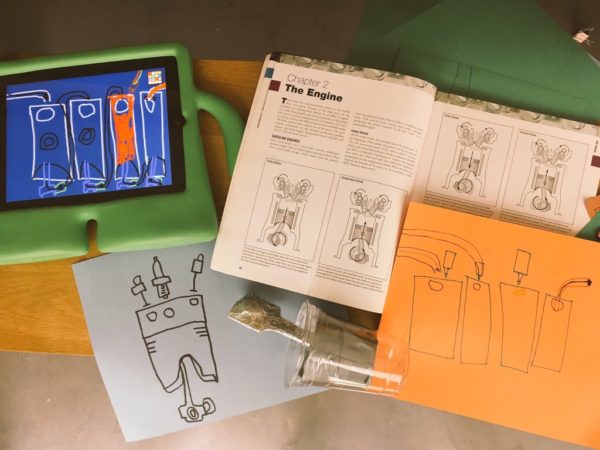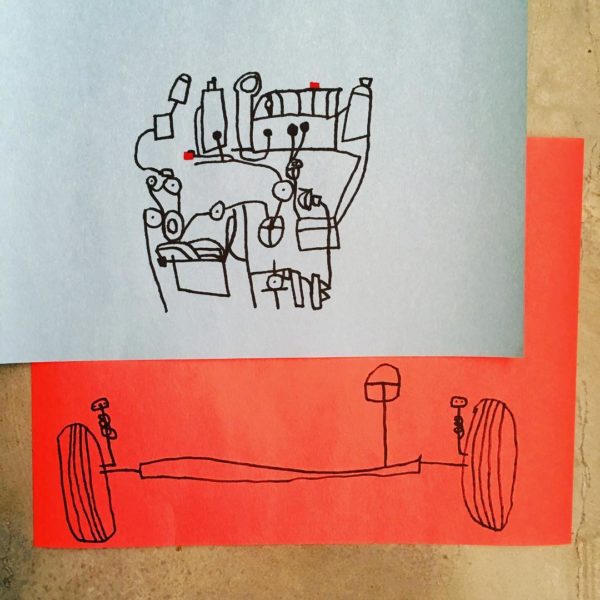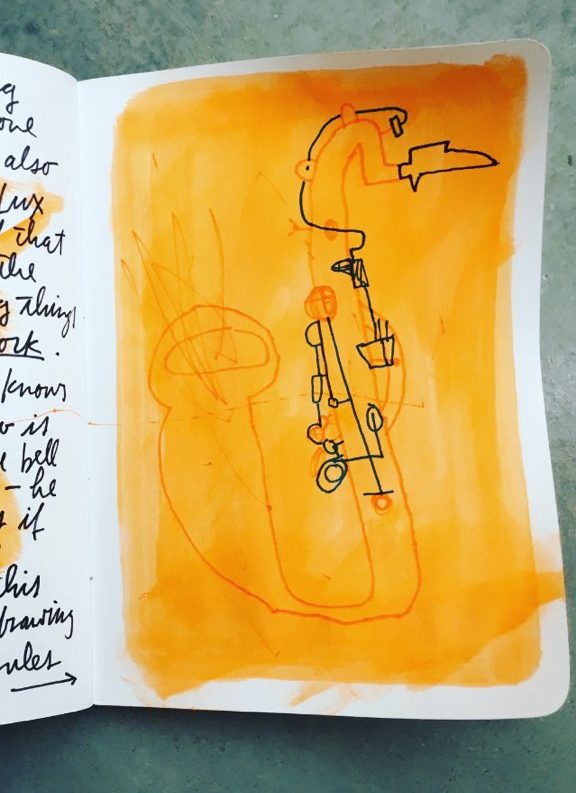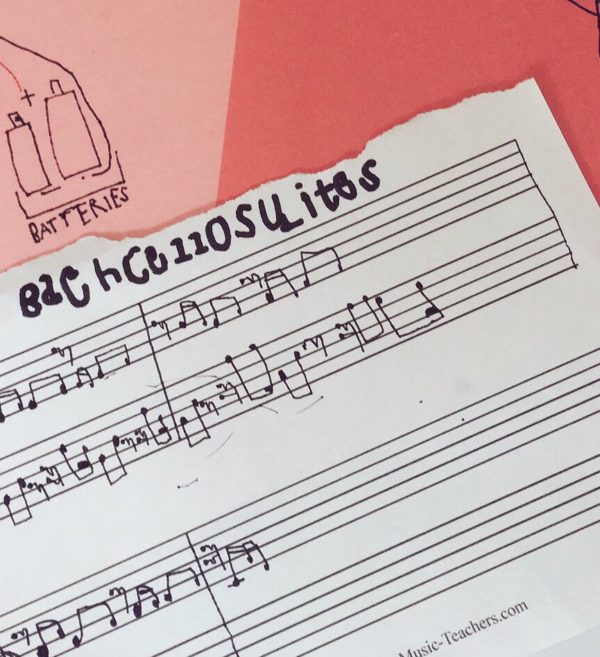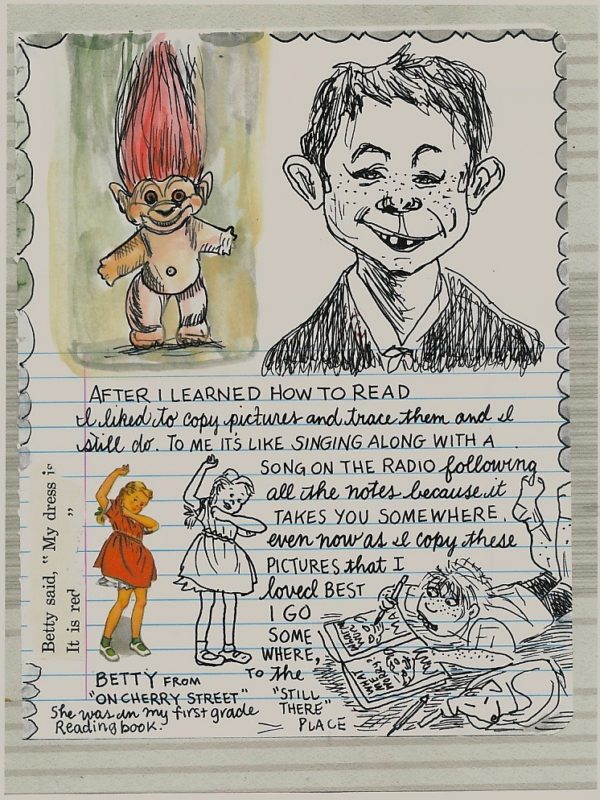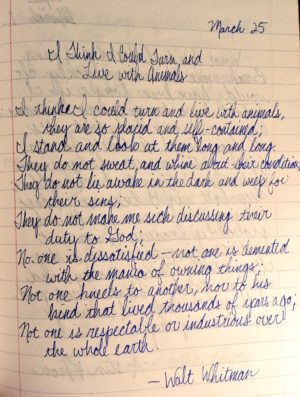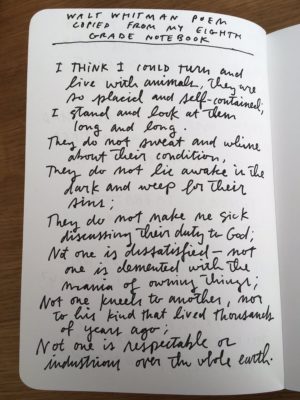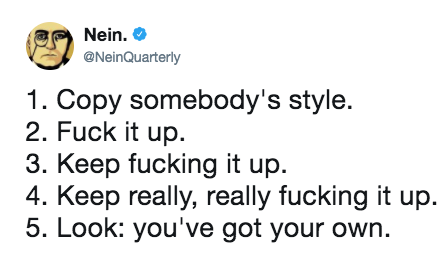
The past two newsletters have been about likability and likeness. Last week I wrote about Courtney Love and how freeing it is to shed the desire to be liked:
“Being liked was never my thing,” Love says. At the same time, her ambition was enormous: She wanted to be a rock star in a big way. This capacity, this lack of desire to people please, like all energies, has enormous creative and destructive potential. (This fits in with some of the perfectionist stuff we talked about last week.) To be able to shed the desire to be liked and to be likable sets you free in your work.
It is never lost on me that the collages I fuss over are one thing, but the ones like the collage above, which are made by just sticking random tape scraps on my desk to the page, seem to have something much wilder and free in them. The more I listened to Love, the more the collages seemed to loosen up. (I have a beloved Wayne White painting in my house that says “UNFOLLOW,” but in the studio I have a tiny framed piece that says ”UNLIKE.”)
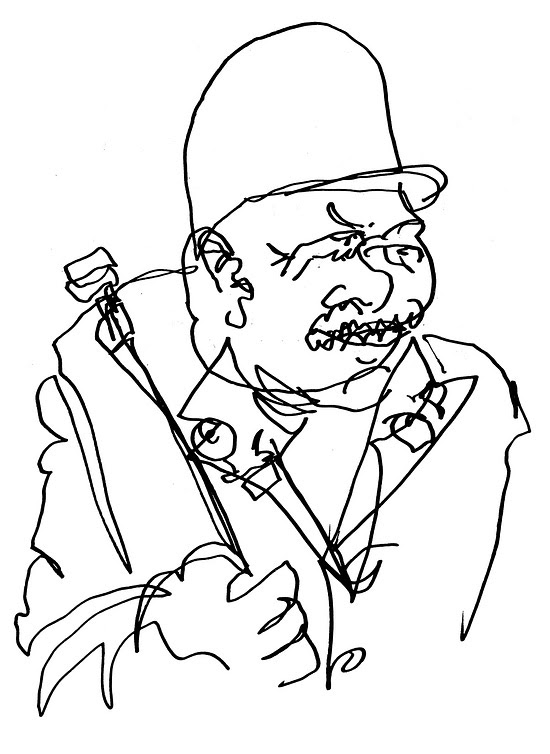
Last week I wrote about how looking at Ralph Steadman’s drawings of the Kentucky Derby made me want to draw my own and, again, how liberating it is not needing your drawings to be likable to their subjects:
While paging through Steadman’s drawings, I got the urge to draw. So I started to make some blind contour drawings of the TV without looking down at my pen and paper. I drew the bugler, the jockeys, the owners, and even a few horses. The whole time I was thinking about Steadman’s monstrous drawings, how liberating it is to be unafraid of flattering the subject of your drawing. A likeness is not what you’re going for, in fact, you’re going for a kind of unlikeness.
One of the reasons I didn’t connect with writer Nicholson Baker’s recent book about learning to draw, Finding a Likeness, is that he couldn’t seem to enjoy the process of drawing unless the drawing resulted in what he felt was visual accuracy. I remember watching him learn to draw on Twitter and Instagram and noticing a point at which he seemed to get much better, and saying so. Upon reading the book, I realized that point was when he started tracing photographs to begin his drawings. In the book, Baker draws like a kind of anti-Steadman — he gets photos of couples off of Reddit threads and tries to do right by them in his portraits — to find a likable likeness.
We have been living through a “please like me” era — “like us on Facebook!” — but I wonder if the tide will turn soon, and artists will find power in being unlikable again…
